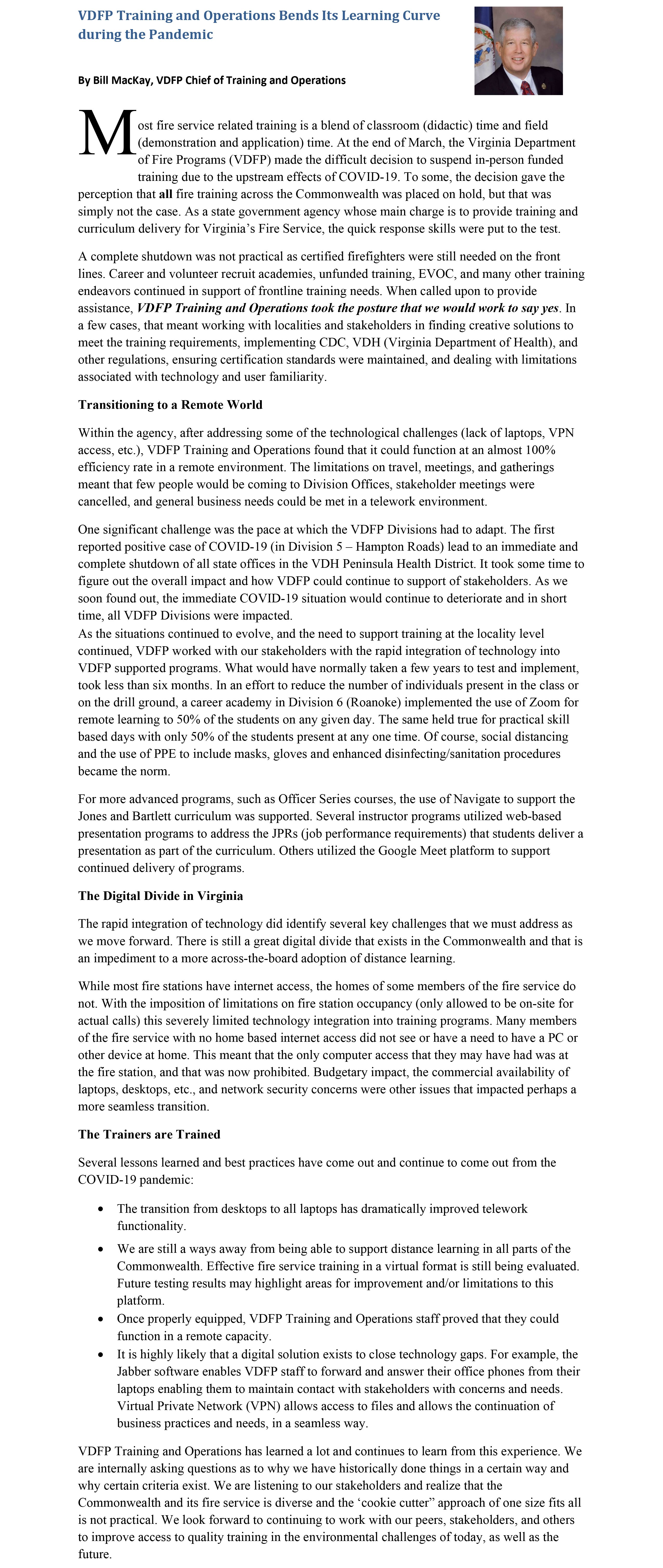VDFP Cautions against the Mishandling of Dry Ice Used for Shipping and Storing COVID-19 Vaccines
Improper handling of dry ice when converted to a gaseous state presents structural, respiratory, and environmental hazards.
RICHMOND – December 30, 2020 – The Virginia Department of Fire Programs, a leader in enhancing public safety, is cautioning first responders, health care professionals, and citizens in the Commonwealth about the dangers of improper storage and disposal of dry ice, which has surged in use to transport COVID-19 vaccines that require storage at ultra-low temperatures.
Dry ice is a solid form of carbon dioxide (CO2). Dry ice weighs just about twice as much as regular ice. Dry ice goes from a solid to a gas (sublimates) as it warms, releasing carbon dioxide.
According to a white paper on dry ice response issued by the International Association of Fire Chiefs (IAFC) Hazardous Materials Committee, the primary health hazard occurs when dry ice returns to its gaseous carbon dioxide state at -78°C. The gas quickly expands and displaces oxygen inside enclosed spaces such as in transport compartments, small buildings, and walk-in coolers.
“We’re noticing a number of groups who are coming into contact with dry ice with the mass distribution of COVID-19 vaccines, who may not be aware of the risks that dry ice may impose. For example, dry ice at room temperature, could “off-gas” a high level of CO2 in a confined space. This is a hazard,” said VDFP Executive Director Michael Reilly. “First responders who are trained in hazardous materials response are aware of the proper handling, storage, and disposal of dry ice. We remain partners in response and prevention. We also want to stress the importance of risk mitigation during such an unprecedented time.”
Additional Hazards
If carbon dioxide gas is released while in transport or in storage, hazards can include an increased potential for an explosion due to pressure building within tightly sealed containers with no pressure relief device, unconsciousness due to displaced oxygen, and frostbite or burns if contact with cryogenic liquid or solid pieces of dry ice occurs.
VDFP encourages groups such as health care professionals and medical facility employees who are administering COVID-19 vaccines to call on first responders when carbon dioxide exposures arise.
“Our concern is about how Virginians should properly interact with the volumes of dry ice that the vaccines are packed with. There should be no eating, drinking, or smoking wherever the dry ice is handled, stored, and disposed,” said Virginia State Fire Marshal Garrett Dyer, “If an accident involving carbon dioxide occurs, such as a spillage, there are also environmental impacts to consider. This is why proper disposal of volumes of dry ice by a trained professional is important.”
How to Safety Interact with Dry Ice
- Protect Your Skin – Contact with unprotected skin will cause severe thermal injury equivalent to full thickness burns. Tight fitting cryogenic gloves are required when handling dry ice and offers the most protection. Where the skin is injured due to exposure to dry ice, the contact area will need to be warmed to avoid tearing off skin.
- Store in a well ventilated area – Most health hazards occur during the sublimation process, when dry ice is warmed and converts from a solid directly to a gas. Dry ice will sublime (melt) at -78°C and begin “off-gassing” which will quickly displace the oxygen inside of confined areas.
Resources
- About carbon dioxide – Airgas
- Dry ice safety – Center for Disease Control (CDC)
- Patient management and hazard response – International Association of Fire Chiefs (IAFC)
